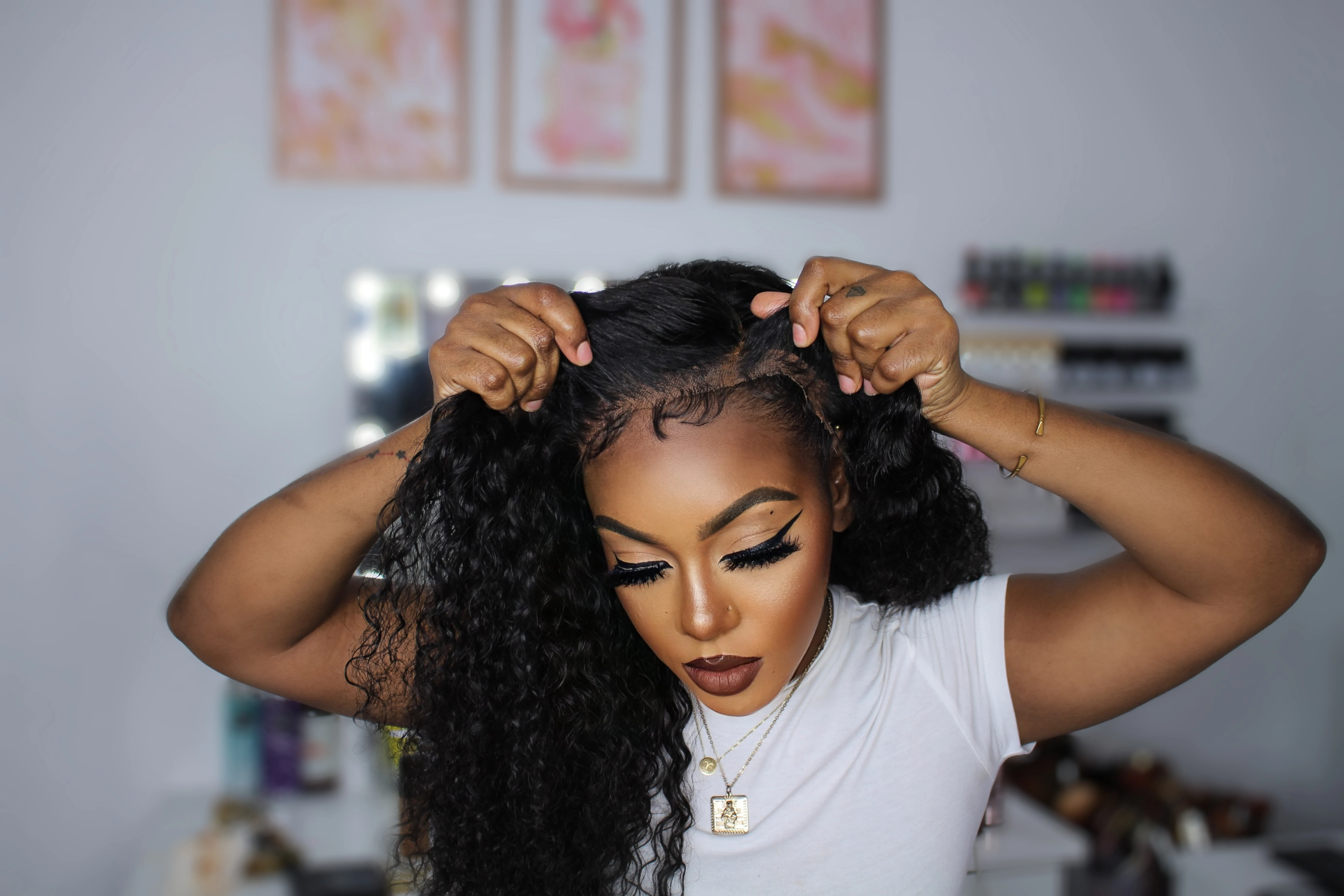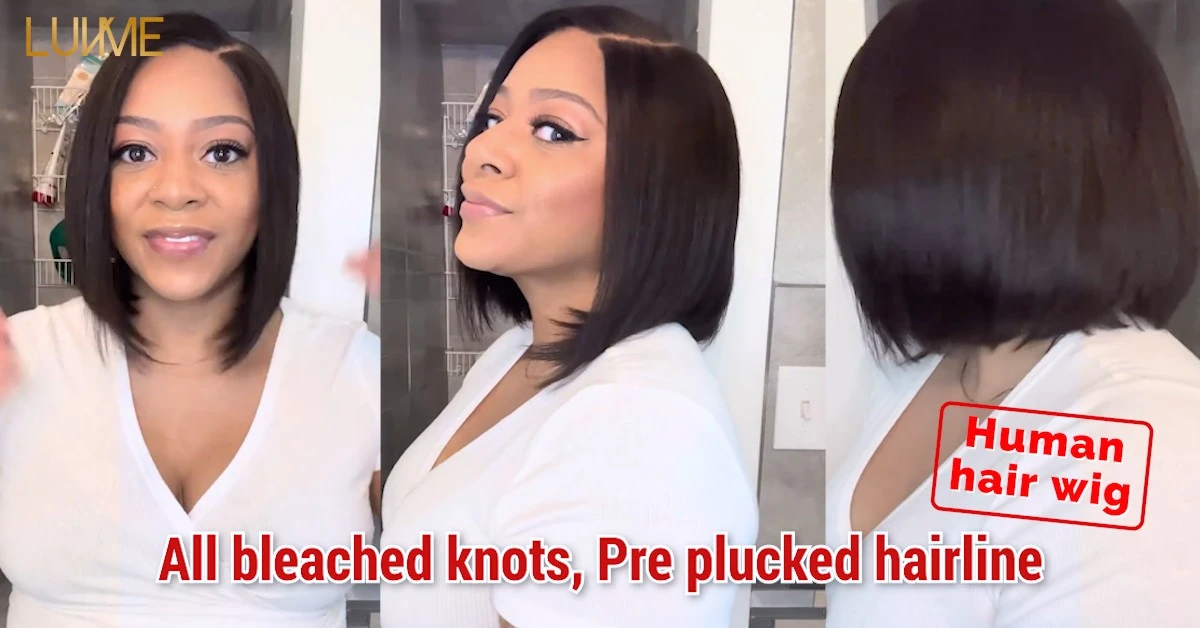Beginner's Guide to Glueless Lace Front Wig Installation

A glueless lace front wig offers a hassle-free alternative to traditional wigs. This type of wig does not require glue or tape for installation. The design includes adjustable straps and combs for a secure fit. Beginners find glueless lace wigs easy to use. These wigs provide a natural look without damaging your hair. Human hair glueless wigs offer versatility in styling. A-List Lace Hair Wigs ensure comfort and durability. Glueless wigs make daily wear convenient. The Edges Glueless Lace Wig protects sensitive scalps. Learn how to put on a glueless lace front wig with ease.
Preparation
Tools and Materials Needed
List of essential tools
To install a lace wig, gather the necessary tools. A wide-tooth comb helps detangle the wig. Scissors are essential for trimming the lace. A wig cap keeps your natural hair secure. Adjustable straps ensure a snug fit. Combs and clips help secure the wig. A mirror allows you to check the alignment.
Recommended products
High-quality products enhance the installation method. A glueless lace wig offers convenience. Choose a wig human hair pre-plucked for a natural look. Body wave wig human hair provides versatility. Curly wig human hair adds volume. Glueless human hair deep wave wigs offer a secure fit. Lace body wave wig ensures a realistic appearance. Exotic curly wig human hair gives a unique style.
Preparing Your Natural Hair
Cleaning and conditioning
Clean and condition your hair before installing a lace wig. Use a gentle shampoo to remove dirt. Apply a conditioner to soften your hair. Rinse thoroughly to avoid residue. Dry your hair completely to prevent mold.
Braiding or securing hair
Secure your hair to create a flat base. Braid your hair in cornrows for a smooth surface. Use bobby pins to secure loose strands. A wig cap helps keep your hair in place. Ensure the cap fits snugly to avoid slippage.
Preparing the Wig
Checking the fit
Check the fit of the wig before installation. Place the wig on your head. Adjust the position to align with your hairline. Ensure the lace covers your natural hairline. The wig should feel comfortable and secure.
Adjusting the straps
Adjust the straps for a secure fit. Locate the adjustable straps inside the wig. Tighten or loosen the straps as needed. The wig should fit snugly without causing discomfort. Use combs and clips for extra security.
Step-by-Step Installation Guide

Adjusting the Wig
Positioning the wig on your head
Place the glueless lace wig on your head. Ensure the lace covers your natural hairline. Adjust the wig until it feels comfortable. Use a mirror to check the alignment. Make sure the wig sits evenly.
Aligning the lace with your hairline
Align the lace with your hairline. Start from the center of your forehead. Work your way to the sides. Check that the lace lies flat against your skin. Avoid any gaps between the lace and your scalp.
Trimming the Lace
Tools needed for trimming
Gather the necessary tools for trimming. You will need sharp scissors. A small pair of scissors works best. A comb helps keep the hair away from the lace. Use clips to secure the hair in place.
Step-by-step trimming process
Begin by securing the wig on your head. Use the comb to pull back the hair. Start trimming the lace from the center. Cut small sections at a time. Follow the natural curve of your hairline. Trim carefully around the ears. Ensure the lace looks natural and blends with your skin.
Securing the Wig
Using combs and clips
Use combs and clips to secure the wig. Locate the combs inside the wig. Insert the combs into your natural hair. Place the clips along the sides. Ensure the wig feels snug and secure. Adjust as needed for comfort.
Ensuring a snug fit
Check the fit of the wig. Adjust the straps if necessary. The wig should feel tight but not uncomfortable. Ensure no gaps exist between the lace and your scalp. Use additional clips if needed. Confirm the wig stays in place throughout the day.
Maintenance Tips
Daily Care
Brushing and styling
Regular brushing keeps the wig looking fresh. Use a wide-tooth comb for human hair wigs. Start from the ends and work your way up to the roots. Avoid pulling on the lace to prevent damage. Style the wig using heat tools designed for human hair. Avoid excessive heat to maintain the quality of the wig.
Storing the wig
Proper storage extends the life of the wig. Place the wig on a wig stand to maintain its shape. Cover the wig with a silk or satin scarf to protect it from dust. Store the wig in a cool, dry place away from direct sunlight. Avoid placing heavy objects on the wig to prevent flattening the lace.
Washing the Wig
Frequency of washing
Wash the wig every 10-15 wears. Over-washing can damage the lace and hair. Use products designed for human hair wigs. Avoid regular shampoos that contain harsh chemicals. Follow a consistent washing schedule to keep the wig clean and fresh.
Step-by-step washing process
Detangle the wig using a wide-tooth comb.
Fill a basin with lukewarm water and add a small amount of wig shampoo.
Submerge the wig and gently swish it around for a few minutes.
Rinse the wig thoroughly with cool water to remove all shampoo.
Apply a conditioner designed for human hair wigs and let it sit for a few minutes.
Rinse the conditioner out with cool water.
Gently squeeze out excess water without wringing the lace.
Place the wig on a towel and pat it dry.
Allow the wig to air dry on a wig stand to maintain its shape.
Troubleshooting Common Issues
Wig Slippage
Causes of slippage
Wig slippage can frustrate many wearers. Incorrect wig size often causes this issue. Loose adjustable straps also contribute. Insufficient combs or clips inside the wig can lead to slippage. Oily hair or scalp may cause the wig to slide. A poorly fitted wig cap can also result in movement.
Solutions to prevent slippage
Prevent wig slippage with a few simple steps. First, ensure the correct wig size. Adjust the straps for a snug fit. Use additional combs or clips for extra security. Clean your hair and scalp to reduce oil. Wear a well-fitted wig cap to keep the wig in place. Consider using a wig grip band for added stability.
Itching or Discomfort
Common causes
Itching or discomfort often occurs with wigs. Synthetic materials in the wig can irritate the scalp. A tight fit may cause pressure points. Lack of ventilation can lead to sweating and itching. Residue from hair products may also cause irritation. An improperly cleaned wig can harbor bacteria.
Tips to alleviate discomfort
Alleviate discomfort with these tips. Choose a human hair wig for better breathability. Ensure the wig fits comfortably without being too tight. Look for wigs with lace fronts for improved ventilation. Clean the wig regularly to remove product buildup. Use a mild shampoo designed for human hair wigs. Apply a scalp protector to reduce irritation.
A glueless lace front wig offers many benefits. The wig provides a natural look without damaging your hair. The installation process is simple and does not require adhesives. The adjustable straps and combs ensure a secure fit. Daily wear becomes convenient and comfortable.
Try the Glueless Lace Front Wig by Luvmeforyou. This product offers versatility and ease of use. Beginners and seasoned wig wearers will find it beneficial.
Personal experiences show satisfaction with this wig. Many users appreciate the comfort and realistic appearance. Choose ISEE HAIR WIGS for quality and style.






















